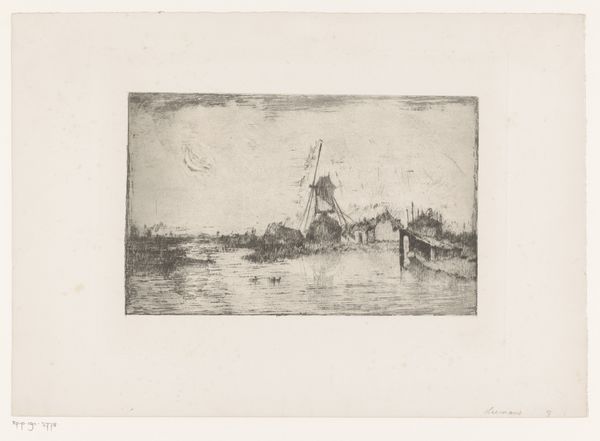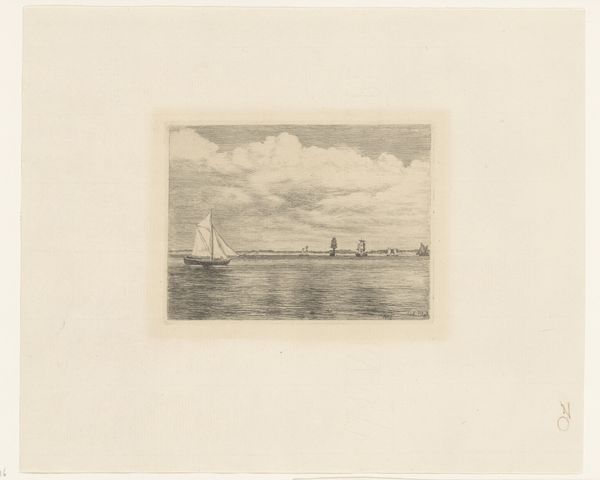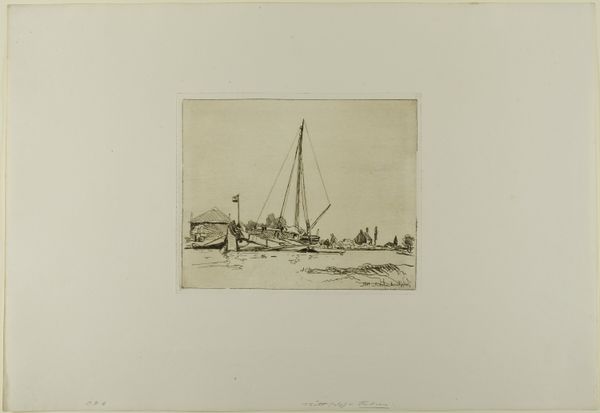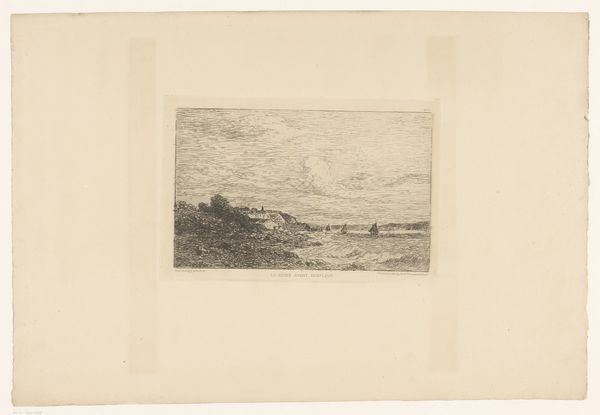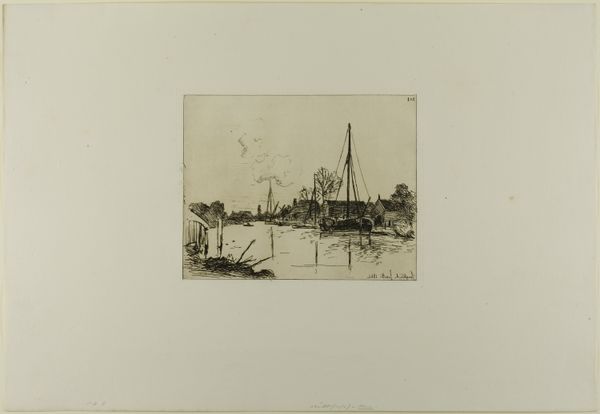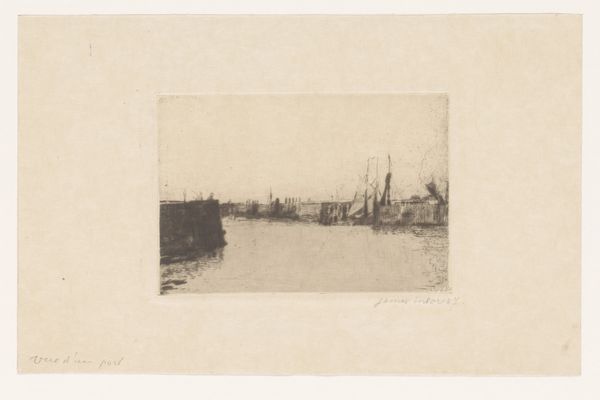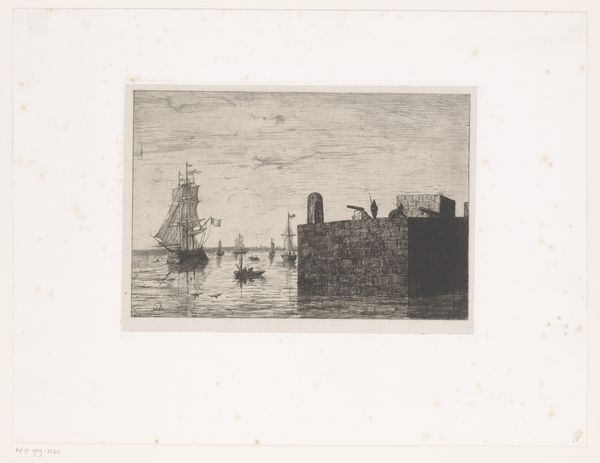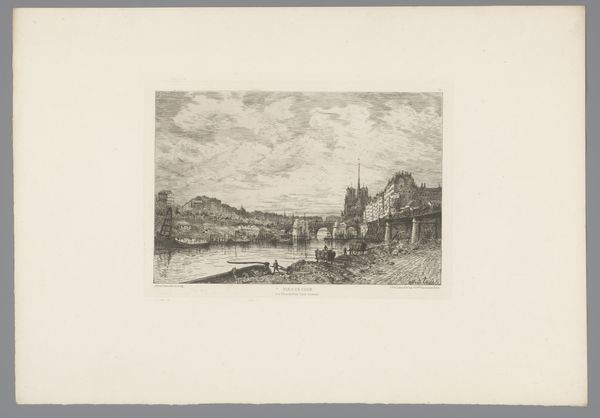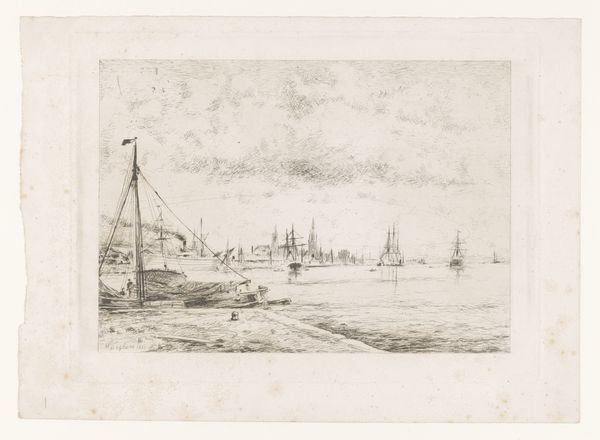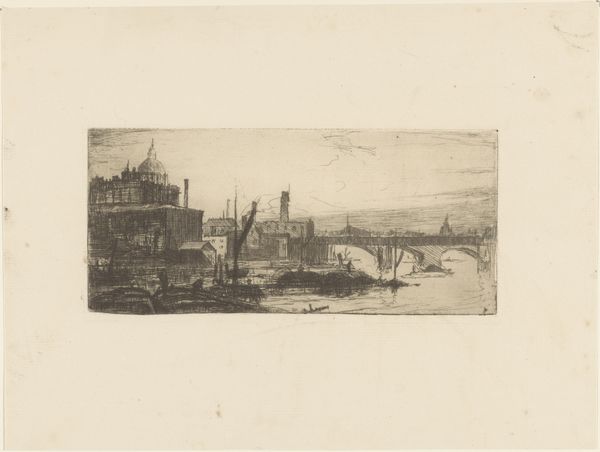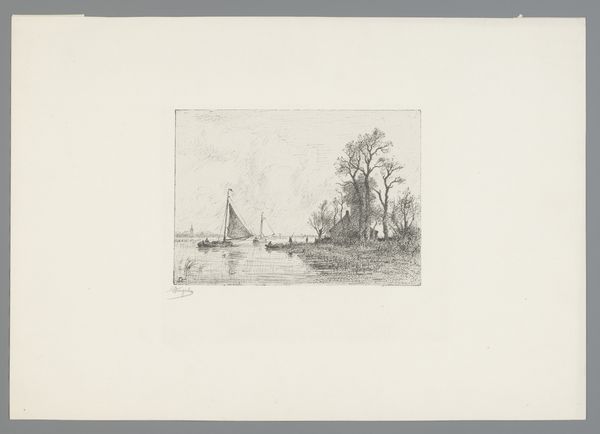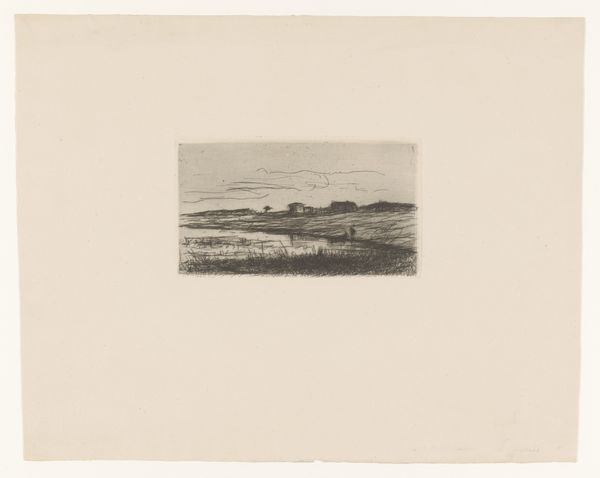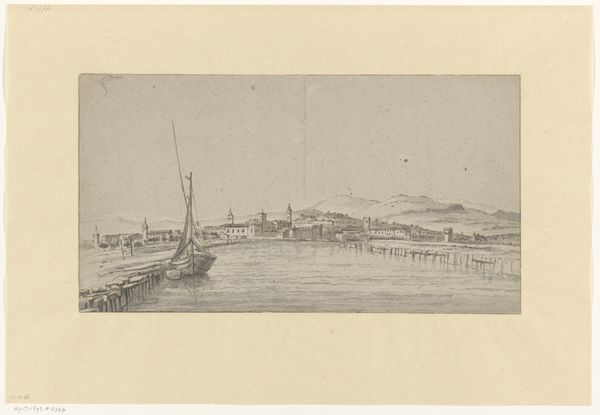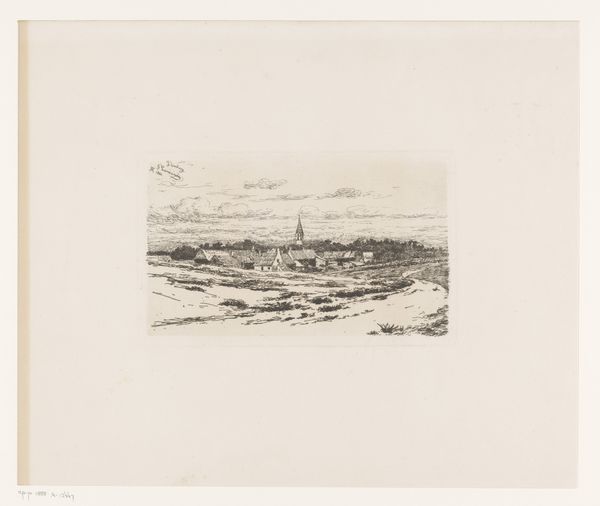
print, etching, paper
# print
#
etching
#
landscape
#
river
#
paper
#
realism
Dimensions: height 173 mm, width 270 mm
Copyright: Rijks Museum: Open Domain
Curator: Theodore Tscharner created this etching titled "Rivierlandschap met aangemeerde zeilboten" or "Riverscape with Moored Sailboats" sometime between 1874 and 1875. Editor: There’s a quietness to it, a sense of waiting. The muted tones add to this impression, almost like the whole scene is holding its breath. Curator: The etching process itself—the careful biting of the plate with acid—is integral to that mood. Think about the labor involved. Each line, a deliberate act of controlled corrosion. That repeatable image produced by an indirect process suggests an emerging culture of readily accessible prints to the wider populace at this time. Editor: And the imagery itself. A riverscape with moored sailboats—evokes so many layers when we think about mobility and stagnation, access and enclosure. Who is sailing these boats? What kind of labor sustains their existence, and who profits? It suggests stories of maritime economies and perhaps colonial exploitation, especially when considering the work's date. Curator: Exactly, but consider how etching facilitated a burgeoning art market. Tscharner could produce multiple impressions, thus offering his art to a wider audience and perhaps subverting established patronage systems. Think of this piece within an evolving industry centered on art reproduction and its implications on value. Editor: But that availability isn’t neutral. Access to art doesn’t always translate into equity or shared understanding. The landscapes of this time often idealized the experience, romanticizing labor or omitting critical perspectives. Does this particular piece do more than passively portray the riverscape before it? Is there a challenge being raised against existing narratives of progress, colonialism, and capitalism? Or is it just complicit in their aestheticization? Curator: Well, I think it is essential to investigate the materiality that conveys these questions and the production context within that material; that is Tscharner’s crucial intervention in all of this, is it not? Editor: Agreed, the image sparks interesting questions, and seeing it from both our angles definitely highlights different elements we hadn't previously noted alone. Curator: A fascinating convergence of process and context.
Comments
No comments
Be the first to comment and join the conversation on the ultimate creative platform.
